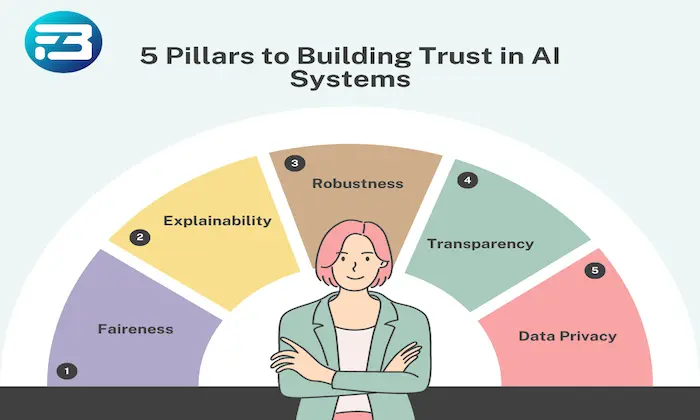Intent tagging vs sentiment analysis: what matters more in customer‑service AI?
Customer Service
AI
Sentiment Analysis
In the realm of customer-service AI, the debate often centers around two critical components: intent classification and sentiment analysis. Both play pivotal roles, but which is more crucial for enhancing customer interactions and improving operational efficiency? Let's explore their importance, applications, and how they integrate to elevate AI capabilities.
Key Takeaways
- Intent classification identifies customer objectives within conversations, driving automation and task resolution.
- Sentiment analysis gauges emotional tones, informing service quality and customer satisfaction strategies.
- Integrated approaches leverage both for comprehensive AI solutions in call center environments.
What Is Intent Classification?
Intent classification is the process of identifying the customer’s goals during interactions. For instance, in call center speech datasets, intents might include "billing inquiry" or "plan upgrade."
Why It Matters in Call Center Speech Datasets
- Automation of Queries: Intent classification powers voicebots by enabling them to understand customer objectives, leading to efficient query resolution.
- Enhanced Routing: It allows for intelligent call routing, ensuring customers reach the right department based on their needs.
- Structured Analytics: By tagging intents, businesses can systematically analyze calls for insights and improvements.
Key Technical Aspects
- Multi-Intent Recognition: Customers often express multiple intents in a single call. Efficient classification systems can detect and annotate these nested intents.
- Hierarchical Intents: Recognizing sub-intents (e.g., "credit card payment" under "billing inquiry") is crucial for nuanced task automation.
What Is Sentiment Tagging?
Sentiment tagging involves detecting the emotional tone of interactions, classifying them as positive, neutral, or negative.
Business Impact & Use Cases
- Customer Satisfaction: By analyzing sentiment, businesses can proactively address dissatisfaction and improve customer retention.
- Agent Performance: Monitoring sentiment helps measure how interactions affect customer emotions, guiding agent training and development.
- Real-Time Monitoring: Supervisors can prioritize calls based on emotional tone, focusing on at-risk interactions.
Advanced Considerations
- Aspect-Based Sentiment: Tagging sentiments towards specific aspects like pricing or service quality provides deeper insights.
- Acoustic Features: Prosody, pitch, and silence detection are crucial for refining sentiment classifiers, capturing emotional nuances beyond words.
Head-to-Head Comparison by Use Case
Voicebot Automation
Intent Classification is Primary: For voicebots, understanding customer intent is essential for executing tasks. While sentiment analysis can enhance interaction quality, intent recognition is foundational.
Customer Experience Analytics
Sentiment Analysis Takes Center Stage: Emotions play a significant role in customer satisfaction metrics and churn prediction, making sentiment analysis vital for experience management.
Compliance & Summarization
Both Are Crucial: Intent tags provide structural summaries, while sentiment tags add context, essential for compliance audits and journey mapping.
Best Practice: Integrated Annotation Approach
Leading AI systems benefit from integrating both intent and sentiment tagging. This dual approach enhances:
- Task Automation: Automated query resolution based on intent.
- Dynamic Conversations: Adjusting tone dynamically based on sentiment.
- Escalation Management: Prioritizing calls that require human intervention.
How FutureBeeAI Powers Both with Yugo
FutureBeeAI’s call center speech datasets, enriched with intent and sentiment annotations, offer a comprehensive solution for AI systems. Our end-to-end speech data collection services and speech & audio annotation pipeline ensure datasets are accurate, consistent, and ready for deployment.
- Quick JSON Example: Showcase how intent and sentiment labels appear in a structured format, aiding seamless integration into AI pipelines.
- Annotation QA Workflow: Utilizing our proprietary tool, Yugo, we ensure high accuracy through automated pre-labeling and human validation. This platform supports multilingual accuracy and structured formatting.
Frequently Asked Questions
Q: When is sentiment analysis more important?
A: Sentiment analysis is crucial when understanding emotional outcomes is key, such as in customer satisfaction and retention strategies.
Q: How does FutureBeeAI ensure data quality?
A: Our datasets undergo a multi-tier QA process, including auto-validation and human spot-checking, to maintain precision and consistency.
Conclusion & Call to Action
Intent classification and sentiment analysis are complementary components of customer-service AI. While intent drives task automation, sentiment enriches customer experience management. For projects requiring robust call center speech datasets, explore our AI data collection services to enhance your datasets. When you’re ready to elevate your AI solutions, contact us to see how we can partner for success.
What Else Do People Ask?
Related AI Articles
Browse Matching Datasets
Acquiring high-quality AI datasets has never been easier!!!
Get in touch with our AI data expert now!








